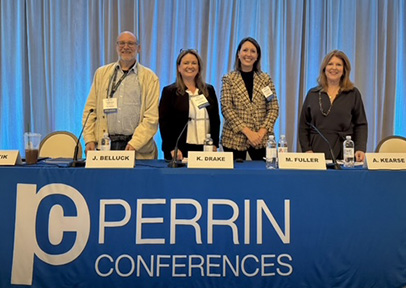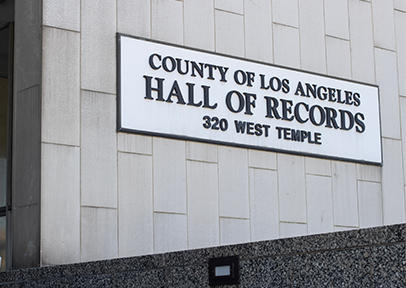Photo courtesy of Perrin Conferences.
By: Kristen Drake
At the recent National Asbestos Litigation Conference hosted by Perrin Conferences, I had the privilege of speaking on a panel addressing Ethics and Successor Liability Issues. While my co-panelists focused on questions of liability, ethics, and successor responsibility, I spoke from the perspective of an insurance archaeologist.
What struck me during the session was how often our work serves as a bridge, connecting promises made decades ago with the realities of litigation today. Liability insurance policies issued in the 1950s, 60s, or 70s still carry weight in the courtroom, and whether or not those policies can be located and proven often makes the difference between survival for companies and justice for victims. Insurance archaeology exists to make sure those promises continue to be honored.
What Insurance Archaeology Really Is
At its core, insurance archaeology is the process of locating, retrieving, and documenting historical liability coverage. It is a specialized discipline combining proprietary research methods with public and private databases, corporate history research, and archival investigations.
At PolicyFind, we operate as an independent, third-party investigator. We are agnostic as to the outcome of litigation. Our singular goal is to reconstruct as much of a defendant corporation’s historical liability insurance program as possible. We do not tilt the scales; we level the field.
Who We Work With
Insurance archaeology impacts everyone in the courtroom. Over the years, our team has worked with:
- Policyholders and defendant corporations who need to recover lost or forgotten coverage history to respond to litigation.
- Plaintiffs’ firms when counterparties are unable or unwilling to provide coverage information.
- Insurers who require clarity for allocation purposes across long-tail claims.
Across hundreds of entities, we’ve seen the same challenge play out: the truth of coverage history is often tangled like a knotted ball of yarn. Our job is to sort through it, needle by needle, until the corporate insurance history is reconstructed with accuracy and clarity.
The Challenge of Time
Time is our greatest adversary.
- Key personnel are deceased, taking with them decades of institutional memory.
- Documents are gone, lost to mergers, dissolutions, warehouse cleanouts, and the simple attrition of recordkeeping.
- Companies themselves may no longer exist, leaving behind nothing but unanswered questions.
Contrary to some assertions in litigation, most defendants are not knowingly discarding policy information. More often, they don’t know what they have or what they should be looking for. That is precisely where insurance archaeology steps in.
Through corporate history research, Freedom of Information Act (FOIA) requests, state archival records, and even interviews with retired co-workers, we pursue every possible lead. The work is painstaking, but the outcome can be decisive: identifying coverage that unlocks millions in protection for claims today.
The Litigation Landscape in 2025
This year, KCIC, which also presented at the conference, shared its Mid-Year Asbestos and Talc Filing Trends. Their data underscores why insurance archaeology is more essential than ever:
- Asbestos filings are up 4% year-over-year, with 2,183 filings through July 31, 2025. Projections suggest a 6% increase by year’s end.
- Mesothelioma filings continue to rise, with 52 more cases this year than at the same point in 2024.
- Talc-related filings are growing at an even sharper rate, KCIC projects a 25% increase in 2025 compared to 2024. Today, 22% of all asbestos filings include a talc allegation, more than double the percentage from 2021.
Against this backdrop, clarity of historical coverage is no longer optional; it is vital.
Successor Liability and Gatekeeping
One of the thorniest issues in asbestos litigation is successor liability. When companies merge, dissolve, or enter receivership, questions of “who pays” inevitably follow. Who is liable when the original corporation no longer exists? Who holds the rights to the historical coverage?
Receiverships and dissolutions often create gaps where coverage information is effectively locked away. In some cases, carriers are appointed to manage dissolved or insolvent companies’ obligations. In others, plaintiffs’ attorneys must try to access coverage information indirectly, creating additional delays and disputes.
Too often, active defendant corporations compound the problem by gatekeeping information. But withholding or restricting access only prolongs uncertainty. As I emphasized during the panel, the solution is simple. Let us in. Insurance archaeologists aren’t there to tilt the outcome; we are there to reconstruct the truth.
Why Insurance Archaeology Is a Smart Investment
For in-house counsel and risk managers, pursuing insurance archaeology is more than just an exercise in corporate history; it is a smart investment in risk management.
- For defendants, reconstructing coverage ensures access to defense and indemnity that might otherwise be lost.
- For plaintiffs, clearer coverage histories mean more opportunities for settlement.
- For insurers, having the full picture enables equitable allocation across long-tail claims.
In every case, the work serves the broader goals of efficiency and fairness.
Meeting the Burden Responsibly
At the end of the day, ethics and successor liability aren’t just about who bears the burden, but how companies meet that burden responsibly.
Insurance archaeology is the bridge. It ensures that promises made decades ago still deliver today. It safeguards the interests of victims seeking justice while also supporting the survival of companies facing massive litigation.
The past and the present are linked. By recovering the past, we protect the future.
The challenges of asbestos litigation don’t have to be faced alone. Our team specializes in reconstructing coverage histories with accuracy and independence. Reach out to PolicyFind to explore how insurance archaeology can support your litigation strategy.




